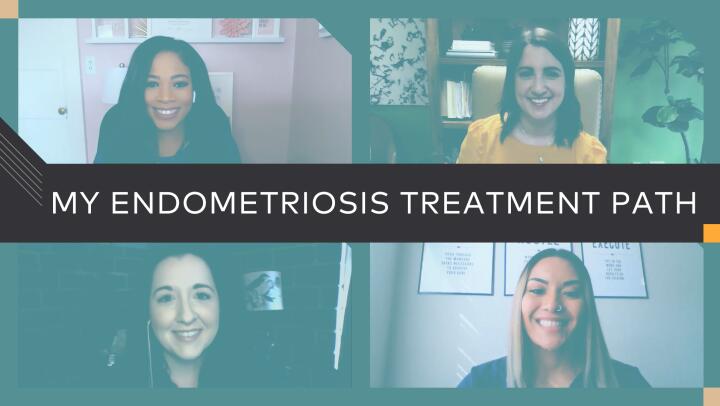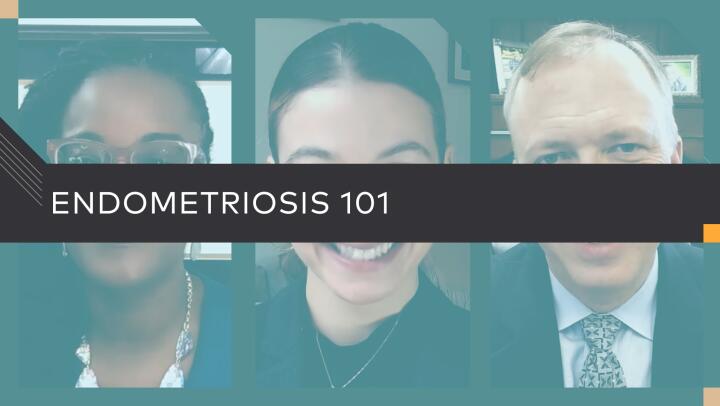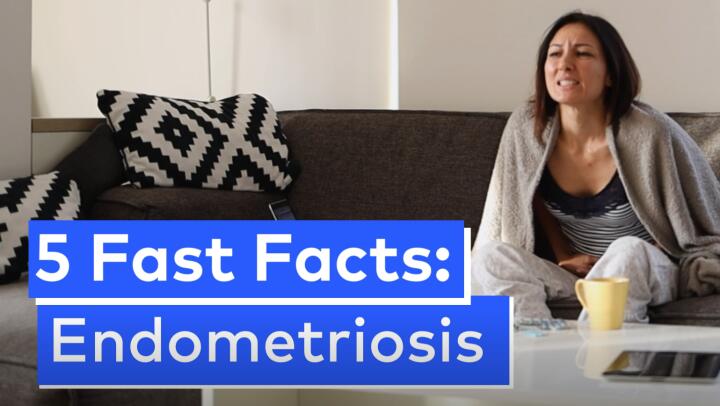This article will explain what endometriosis is. It will also describe the symptoms, causes, and treatment options of the condition.
Sex and gender terms
Sex and gender exist on spectrums. This article will use the term “female” when discussing people assigned female at birth to reflect language that appears in source materials.
What is endometriosis?

During the regular menstrual cycle, endometrial tissue builds up and sheds if no pregnancy occurs. Females with endometriosis may develop tissue that seems similar to endometrial tissue outside the uterus, usually on other reproductive organs inside the pelvis or in the abdominal cavity.
Each month, this misplaced tissue responds to the hormonal changes of the menstrual cycle by building up and breaking down, resulting in internal bleeding or heavy periods.
Unlike menstrual fluid from the uterus that sheds, blood from the misplaced tissue has nowhere to go. This can cause various issues,
- inflamed or swollen tissue
- scar tissue around the area
- development of lesions or growths
- blood embedded in the tissue
- blood blisters
- fibrous cysts
- pain
- infertility
Who gets endometriosis?
Although some females can be asymptomatic and go undiagnosed, endometriosis may affect
Endometriosis can be a major cause of female infertility. Up to 50% of females who experience infertility find that endometriosis is the cause.
In mild to moderate cases, infertility may be just temporary. In these cases, surgery to remove adhesions, cysts, and scar tissue can restore fertility. In a very small percentage, females may remain infertile.
Endometriosis is most common in females between the ages of
What are the symptoms of endometriosis?
Some females with endometriosis may not have symptoms, while others experience pain and prolonged vaginal bleeding during menstruation.
The pain can be cyclical and can occur during sexual activity.
Cyclical pain in the pelvic area is the
Common symptoms of endometriosis
You may experience endometriosis symptoms daily or only occasionally. Any of the following symptoms can be severe:
- abdominal, pelvic, or lower back pain during and after the menstrual period
- cramps in the pelvis before, during, and after the menstrual period
- difficulty or an inability to get pregnant
- fatigue
- heavy bleeding during the menstrual period
- menstrual periods that are very painful
- pain during or after sexual intercourse
- painful bowel movements
Serious symptoms that might indicate a life threatening condition
In some cases, endometriosis can be life threatening. Seek immediate medical care for potentially life threatening symptoms including:
- an inability to have a bowel movement
- an inability to urinate
- persistent vomiting
- severe abdominal pain
When should you contact a doctor?
You should seek medical attention for serious symptoms, such as severe abdominal pain, persistent vomiting, or an inability to urinate or have a bowel movement.
Seek prompt medical care if you are recieving treatment for endometriosis but mild symptoms recur or are persistent, or if you experience blood in the urine or difficulty urinating.
What are the stages of endometriosis?
Doctors classify endometriosis in four stages based on the amount, location, size, and depth of the endometrial tissue.
This can include how far the tissue has spread, the pelvic structures that have tissue on them, and the blockage in fallopian tubes.
Doctors
- stage 1: minimal
- stage 2: mild
- stage 3: moderate
- stage 4: severe
The stage of endometriosis does not necessarily correlate to the severity of symptoms or risk of infertility. Someone with severe endometriosis might still have no symptoms, while someone with mild endometriosis can experience intense pain.
However, infertility is very likely in someone with stage 4 endometriosis.
What causes endometriosis?
The precise cause of endometriosis is not entirely understood. There is no solid consensus as to how endometrial cells are able to live outside of the uterus.
Another theory is that endometriosis may be due to the reverse movement of endometrial cells as they shed from the wall of the uterus during the normal menstrual cycle.
It is
What are the risk factors for endometriosis?
A number of factors increase the risk of developing endometriosis. Not all people with risk factors will develop endometriosis.
Risk factors may include:
- blocked flow of menstrual blood during the period, possibly due to a closed hymen
- family history of endometriosis
- frequent menstrual cycles
- no history of pregnancy or breastfeeding
- short menstrual cycles
- young age at the start of menstruation
Reducing your risk of endometriosis
There is no way to definitively prevent endometriosis. However, you can take steps to reduce your likelihood of developing the condition if you have risk factors.
Because estrogen works to thicken the lining of your uterus during menstruation, lowering your estrogen level can help mitigate the risk of endometrial tissue forming outside the uterus.
You can lower your estrogen levels by:
- asking your doctor about hormonal birth control to lower circulating estrogen levels
- avoiding highly caffeinated drinks, such as tea or soda, which can raise estrogen levels
- exercising regularly, which can also help lower your percentage of body fat, in turn decreasing the amount of estrogen moving through your body
- limiting alcohol to one drink per day, as heavy alcohol use
can increase Trusted Source PubMed Central Highly respected database from the National Institutes of Health Go to source estrogen levels
In addition to lowering estrogen levels, there are several other lifestyle factors that can help reduce the risk of endometriosis, such as limiting dairy products in your diet.
How do doctors diagnose endometriosis?
Diagnosis begins with a medical professional evaluating a person’s medical history and performing a complete physical examination that includes a pelvic exam.
A diagnosis of endometriosis can only be certain when the physician performs a laparoscopy.
A laparoscopy is a minor surgical procedure in which a doctor inserts a laparoscope, which is a thin tube with a lens and a light, into an incision in the abdominal wall. Using the laparoscope to see into the pelvic area, the physician can often determine the locations, extent, and size of the endometrial growths.
Other tests that may help in diagnosing endometriosis
How is endometriosis treated?
Some females with endometriosis never have any symptoms, but when symptoms do occur, there are several treatment options available.
Treatment options for endometriosis
The choice of treatment depends on the severity of the condition, the desire for fertility, and the overall health and age of the person.
Options include:
- Hormone medications: These include medications such as oral contraceptives, or progestins, to slow the growth of endometriosis and to reduce the size of endometriosis growths or deposits of endometrial tissue.
- Hysterectomy: This involves the surgical removal of the uterus, or the uterus and cervix, which is a total hysterectomy.
- Nonsteroidal pain medications: These include medications such as ibuprofen.
- Surgical removal or destruction: This involves surgically removing the growths themselves. Not everyone will need or benefit from surgery, however.
- Treatments for infertility: Doctors may treat infertility issues separately.
Alternative therapies and at-home remedies for endometriosis symptoms
Finding an endometriosis treatment that works can take time. Talk with your doctor about ways you can manage symptoms through alternative therapies and home treatments, including:
- Acupuncture: It is not scientifically proven as a treatment for endometriosis pain, but it has been reported by some people as a way to find symptom relief.
- Cognitive behavioral therapy: This is a method of reframing thought patterns to cope with physical, mental, and emotional challenges. We need more research on the use of CBT for endometriosis pain specifically, but the therapy has been successful in treating other types of chronic pain.
- A heating pad or warm baths: This can ease cramping and pain.
- Pelvic floor physical therapy: A trained physical therapist guides the person through a series of exercises and manipulations of the pelvic floor muscles to help alleviate tightness and pain.
- Stress management: Through healthy lifestyle habits — such as a nutritious diet, regular exercise, and good sleep habits — you can reduce your sensitivity to pain and make it easier to cope with endometriosis symptoms.
- Support groups: This can be either online or in person, where you can connect with other people living with endometriosis and share challenges, feelings, and coping tips.
How does endometriosis affect quality of life?
Endometriosis can present a range of challenges, from the time when symptoms begin all the way through the treatment process.
For many females, doctors can overlook symptoms or mistake them for other conditions. Some people may even find that friends and family members dismiss their symptoms as not real.
Endometriosis and chronic pain
Even after diagnosis and through treatment, chronic pain can persist, causing persistent disruption to daily life. Medications, alternative therapies, and other coping mechanisms can help manage pain. Talk with your doctor if your endometriosis symptoms are becoming overwhelming or impacting your ability to enjoy your typical routine.
Endometriosis and sex
For many, painful sexual intercourse is the first sign of endometriosis that leads to a diagnosis. Even with treatment, endometriosis can still make intimacy difficult. The chronic pain and stress of the condition can limit libido, and the physical act of intercourse can be uncomfortable or painful.
Your doctor can discuss options for additional treatment to address symptoms that are affecting your sex life.
Endometriosis and infertility
For many with endometriosis, uncertainty about fertility is the first issue that comes to mind after diagnosis. Surgery to remove the tissue
What are the potential complications of endometriosis?
Infertility is the main complication of endometriosis. You can help minimize your risk of serious complications by following the treatment plan you and your healthcare professional design specifically for you.
Complications of endometriosis can include:
- chronic pain
- gastrointestinal blockage
- hemorrhage
- infertility
- pelvic cysts that have the potential to rupture
- perforation of affected organ
- urinary blockage
Infertility, or impaired fertility, is a primary complication of endometriosis. However, treatment of early stage endometriosis — including surgical removal of endometrial tissue — can be effective in improving fertility and allowing for successful pregnancies.
In more advanced cases, you may need additional fertility treatments. The good news is that many people with endometriosis are able to conceive successfully and deliver healthy babies.
Other frequently asked questions
Here are some frequently asked questions about endometriosis. The answers have been reviewed by Dr. Sanaz Ghazal, M.D., FACOG.
What does endometriosis look like?
Endometriosis tends to look like small, raised patches on the pelvic surface. Deep endometriosis looks like nodules on the affected area.
What happens if endometriosis is left untreated?
Untreated endometriosis can lead to disease progression, which can ultimately cause scar tissue development, anatomic irregularities, worsening symptoms of pelvic pain, increased scar tissue formation, and infertility.
Summary
Endometriosis is a condition in which cells that are similar to the lining of the womb start to grow in other places, such as the fallopian tubes and ovaries.
Endometriosis can affect females of all ages, but it usually occurs between the ages of 25 and 29 years. Symptoms include infertility, pelvic pain, heavy bleeding, and pain during sex or bowel movements.
With the right care and treatment, the impact of endometriosis on your life can be minimal, and symptoms can be manageable.



















